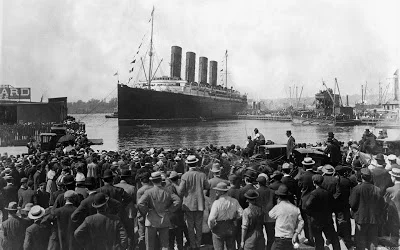The Boxers on the Titanic
/Dai Bowen and Leslie Williams couldn’t believe their luck. The young Welsh boxers had been chosen out of hundreds of contenders to travel to the United States to compete in a series of boxing contests. An American sports promoter, Frank Torreyson, had paid for their passage across the Atlantic on the Lusitania and would act as their manager. But Leslie, 24, couldn’t go until his new clothes arrived from the tailor. After all, clothing would be more expensive in America, and he would be gone a year. So, with new clothing and all the good wishes of their families and boxing enthusiasts across Wales, the pair were rebooked on another ship sailing a few days later, the Titanic.
82481_dai_bowen_treherbert
Dai Bowen
leslie williams
Leslie Williams
David John “Dai” Bowen, 20, wrote to his mother on April 11, 1912, one day after Titanic left Southampton. He mailed the letter when the ship docked in Cherbourg, France.
“This is a lovely boat… she is like a floating palace, against you walk from one end of her to the other you are tired. We are landing in France the time I am writing you this, you don’t know whether she is moving or not for she goes very steady. Dear Mother, I hope that you won’t worry yourself about me, I can tell you that I am a lot better than I thought I would be, for we gets plenty of fun on board.”
He went on to tell his mother how good the food was, “but not as good as back home.”
The men traveled on one ticket as Third Class passengers, and planned to use the ship’s gymnasium to stay in shape for their American debuts. But the gym was reserved for First Class passengers only. Perhaps an exception was made for the two promising boxers.
When the Titanic struck an iceberg on the night of April 14 and sank, neither man survived. Dai Bowen’s body was not recovered. He was unmarried.
Leslie Williams’ body was recovered by the ship Mackay-Bennett and was buried at sea. He left behind a pregnant wife and young son. She eventually remarried and had several more children.
news after boxers die o n titanic
Newspaper article detailing benefit to take place to help the boxers' families after the sinking.
Photo credits: Boxinghistory.org.uk, Encyclopediatitanica.com.



















